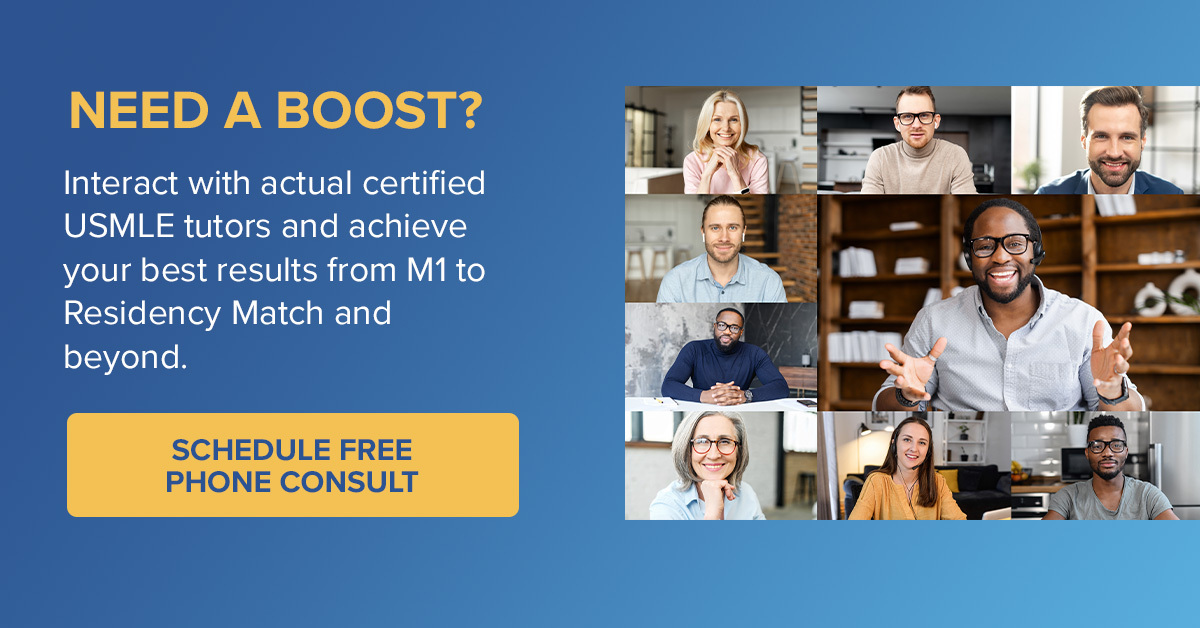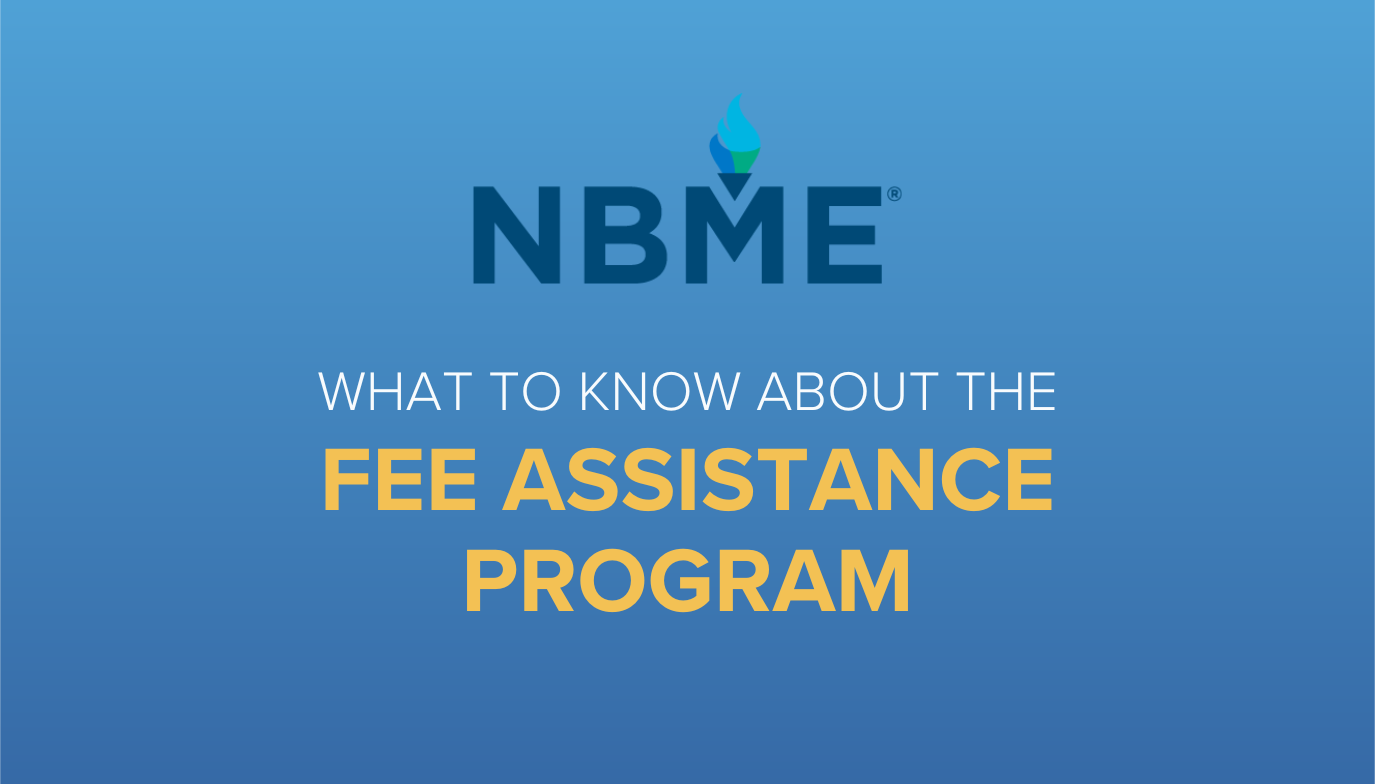Wondering how to use the USMLE First Aid 2025 updates to study for your Step exam? If so, your head is in the right place. Any seasoned medical student today, similar to students from a decade ago, will tell you: the sooner you integrate First Aid into your study routine, the better. Its usefulness in preparing for the USMLEs can’t be overstated. It’s not just a book—it’s also a roadmap to success.
And it continues to be a key resource for medical students preparing to take the USMLEs in 2025. But maybe you’re not sure how to use it, and are wondering what it can be used for? We’re going to show you how to get the most out of the study guide, so you can be as prepared as possible for the step exams.
But before we get into some USMLE First Aid 2025 tips, let’s begin with the basics. Just what is First Aid anyway? And why is it so great when it comes to preparing for Step exams?
Looking for a Qbank to help out with USMLE studying this year? Blueprint has got you covered with practice questions, detailed explanations, performance analytics, and more! 💙
🌟 Step 1 Practice Bundle – Includes 2 full-length USMLE practice exams with a total of 560 NBME®-formatted practice questions, plus 500 additional questions in a Qbank
🌟 Step 2 & Shelf Exams Qbank – Includes 5,500+ practice questions (1,500 Step 2 questions and 4,000 shelf questions across 8 specialties), plus 8 mock shelf exams!
What is First Aid?
First Aid is a series of comprehensive review books designed to help medical students prepare for their USMLEs. They summarize high-yield (frequently tested) topics, mnemonics, and practice questions tailored for Step 1, Step 2 CK, and Step 3. They’re essential study tools for many examinees.
The series is one of the most iconic resources for USMLE preparation, with a history that spans over three decades starting in the 1990s. It was developed with the help of medical students aiming to simplify the overwhelming content of the Step 1 exam into a concise, high-yield format. The book was created to focus on what students needed to know most—condensing vast amounts of material into high-yield summaries, mnemonics, and tables.
Over the years, First Aid has been revised annually to include updated exam content, more algorithms and diagrams, along with new clinical correlations reflecting the evolving USMLE blueprint. Finally, following the success of First Aid for Step 1, versions for Step 2 CK, Step 3, and other specialized iterations were introduced.
Why First Aid Is Essential
What makes First Aid a must have for every medical student? Quite simply, it’s the organizational framework that transforms overwhelming amounts of information into digestible, testable nuggets.
Medical school curricula differ widely, and the sequencing of topics can sometimes feel chaotic. First Aid provides a backbone for structuring your learning, offering a coherent overview of high-yield concepts and clinically relevant details. Its detailed indexing also saves precious time when revisiting topics—trust me, you’ll be flipping to the “anemias” section more times than you can count.
Now with technology and the digitized version of USMLE First Aid 2025, you can easily find (ctrl + F or command + F) what you’re searching for that much easier. You can search for the topic, add it to a flashcard and continue effortlessly with your studying.
Beyond its structure, First Aid can help you identify what’s actually important. For instance, rather than bogging you down with every enzyme in a pathway, it highlights the ones most likely to appear on exams. This high-yield approach is invaluable not only for USMLE prep but also for school exams and NBME assessments.
Tips & Tricks for Getting Started with First Aid
The first thing you’ll want to do is get acquainted with the structure and content of First Aid.
I recommend you do the following:
1. Understand the layout.
First Aid for Step 1 is structured with organized sections, including systems-based and discipline-based chapters, high-yield facts, mnemonics, and tables.
Take time to understand this format and use it to your advantage. Perhaps you learn best with tables and diagrams, perhaps learning medical mnemonics helps your recall, or maybe you like to create your own way to understand a complex medical topic. Either way, First Aid is a great outline to use for each section and topic of the USMLE Step 1 exam.
2. Build a study plan.
Divide the book into manageable chunks, such as specific organ systems or topics, and plan your study sessions around them. Do a section of Qbank questions and refer to that same section in First Aid to jot down notes or tips for yourself to review later.
3. Use active learning techniques.
This includes things such as annotating directly in the book with key insights from other resources, such as your Qbank. Focus on frequently-tested concepts like pathophysiology, mechanisms of drugs, and clinical correlates that are highlighted in the book.
USMLE First Aid 2025 Cheat Sheet: Modern Study Strategies to Use With First Aid
Customizing and personalizing your First Aid book is an effective way to enhance your learning and make it a central resource for USMLE prep.
Here’s a few examples to help you do it efficiently:
1. Select your tools.
Highlighters
Use different colors to categorize information (e.g., green for facts you know, yellow for key points, orange for things to review).
Pens & Markers
Fine tip pens are great for writing in the margins or adding annotations. Add information to a diagram or table from a question you answered incorrectly. Or add a medication the book left out.
Sticky Notes
Use for more detailed notes that won’t fit in the book margins.
Tabs
Mark key sections for quick reference (e.g., organ systems, pharmacology tables).
2. Annotate with purpose.
Supplement with notes.
As you review other resources and answer online Qbank questions, annotate key insights or add missing details directly in the margins of your First Aid book so it can become a one-stop shop for all of your USMLE Step 1 needs.
Link related topics.
Add cross references within First Aid (e.g., “See respiratory physiology, pg. XX”) when appropriate to link topics together. It’ll help you understand and remember them with ease.
Summarize complex topics.
Condense difficult concepts (e.g., detailed pharmacology mechanisms) into your own words for easier review. The book will have plenty of images and diagrams. Add your own sketches or flowcharts to simplify processes like the Krebs cycle or drug mechanisms.
Finish charts and tables.
The book has many charts and tables. If any are incomplete, unclear, or just lacking a tidbit of information you find necessary, easily expand them with additional notes or mnemonics of your choice. Utilize arrows, stars, or boxes to emphasize relationships or critical points.
Track your progress.
Use sticky tabs or a tracking system to identify sections you’ve mastered versus areas needing more work. Avoid overloading your book with too much information—focus on the most high-yield insights. And clear up sections you’ve mastered! Resist the urge to highlight everything and keep your annotations clear and organized. Overloading the page can make it harder to review later. As you gain more knowledge, refine your notes and remove redundant or outdated information.
Tailoring the book to your learning style makes it more effective. Highlighting, writing, and organizing content boosts retention. With a well personalized First Aid, you can transform it into a powerful resource that anchors your USMLE preparation!
4 Ways to Use First Aid Throughout Medical School
One of the great things about USMLE First Aid 2025 is that you can use it in so many different ways. It’s a great resource, and you can be creative with it.
Here are some things you can use it for:
1. Previewing Lectures
Before attending class, take a glance at the corresponding First Aid sections to familiarize yourself with key concepts. This seemingly small effort pays off in a big way by making lectures more engaging and less overwhelming. You’ll remember more and might even have questions to ask the speaker. Many students’ first purchase in medical school is First Aid. In fact, many schools across the US provide the book for their MS1 class!
2. Integration with Other Resources
Tools like Anki, Sketchy, and Qbanks are staples for modern med students. Linking your First Aid notes to Anki decks or Sketchy videos ensures the material sticks. Some students take separate notes while others annotate directly into First Aid while completing Qbank questions.
Additionally, tools like Blueprint’s Med School Study Planner and online annotation platforms make it easy to integrate USMLE First Aid 2025 into a personalized, tech-enabled study plan.
The study planner breaks the book down by page, allowing students to create detailed study schedules with minimal effort. It’s a gamechanger for balancing First Aid with other resources!
3. Dedicated Prep
During dedicated USMLE Step 1 prep, I relied on First Aid as my central hub. Any new detail from practice questions or supplemental resources went straight into the margins of my copy. This ensured I wasn’t spreading myself thin with multiple resources.
4. Subject-Specific Tips
Here’s how I approached different subjects using First Aid:
Biochemistry
First Aid can be to preview pathways and focus on clinically relevant enzymes.
Pharmacology
I reviewed mechanisms of action and side effects before lectures. I also added lecture-specific details as annotations.
Pathology
For this I used First Aid as a quick reference, especially for summarizing large amounts of material. I like Pathoma for this topic.
Microbiology
I used First Aid before lecture as a primer to avoid feeling overwhelmed. Sketchy Microbiology is key here.
The 4 Lasting Benefits of Using First Aid Consistently
Using a tool like First Aid consistently for all your USMLE Step studying provides lasting benefits that go beyond test preparation.
Advantages include the following:
1. Concept Reinforcement
Repeatedly revisiting First Aid across Step 1, Step 2 CK, and Step 3 reinforces foundational medical knowledge, ensuring long-term retention. Starting with Step 1’s focus on pathophysiology and applying that knowledge to patient and disease management in Step 2 CK and Step 3 creates a seamless understanding of medicine.
Step 2 and Step 3 emphasize clinical scenarios and decision making rather than basic sciences. Use the same annotation and active learning techniques, but adapt to include management protocols, diagnostic workups, and patient-centered care. Your knowledge base from Step 1 will help as you now apply that understanding to clinical vignettes.
2. Consistency and Efficiency
Sticking with First Aid reduces the learning curve, since you’re already comfortable with the format and layout. Having a familiar, reliable resource eliminates the anxiety of choosing new study tools for each exam leading to more streamlined prep.
3. Cumulative Annotations
Over time, your notes, mnemonics, and highlights evolve, turning First Aid into a personalized and comprehensive study guide tailored to your learning style that strengthens memory and aids deeper understanding.
4. Connections and Common Cause
Lastly, since most medical students studying for the USMLEs use First Aid, it serves as common ground for in-person and online group study sessions. Other people in the group may have the same questions you do, and everyone can use First Aid as a reference.
Final Thoughts
First Aid is a resource that blends organization, high-yield focus, and adaptability to make it a cornerstone of modern medical education. Start early, make it your own, and watch it transform the way you study and retain information. Many students are using the techniques discussed here to get organized and prep hard in 2025. Dust off your copy (or download the PDF) and take the first step toward mastering the USMLE!





